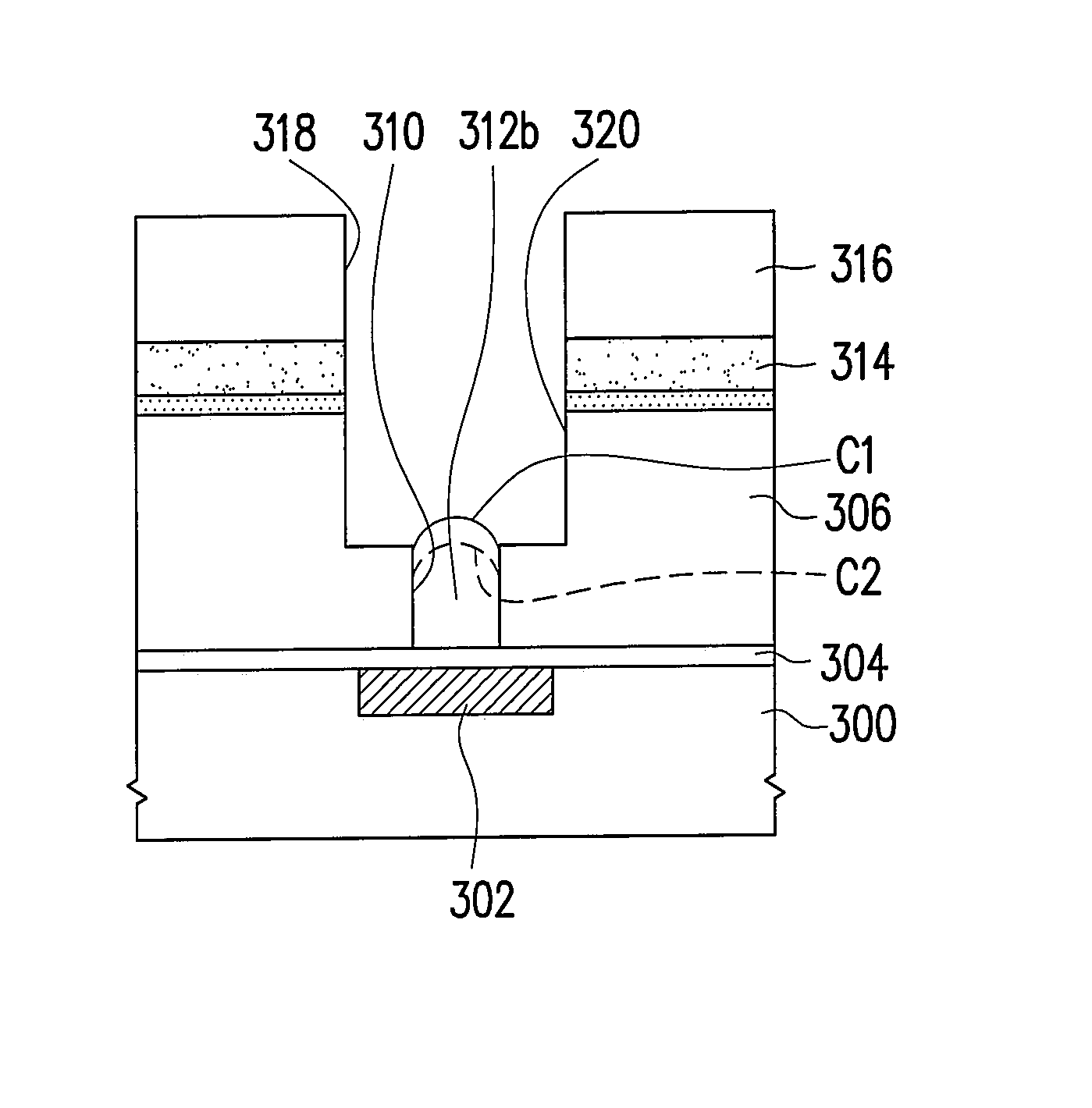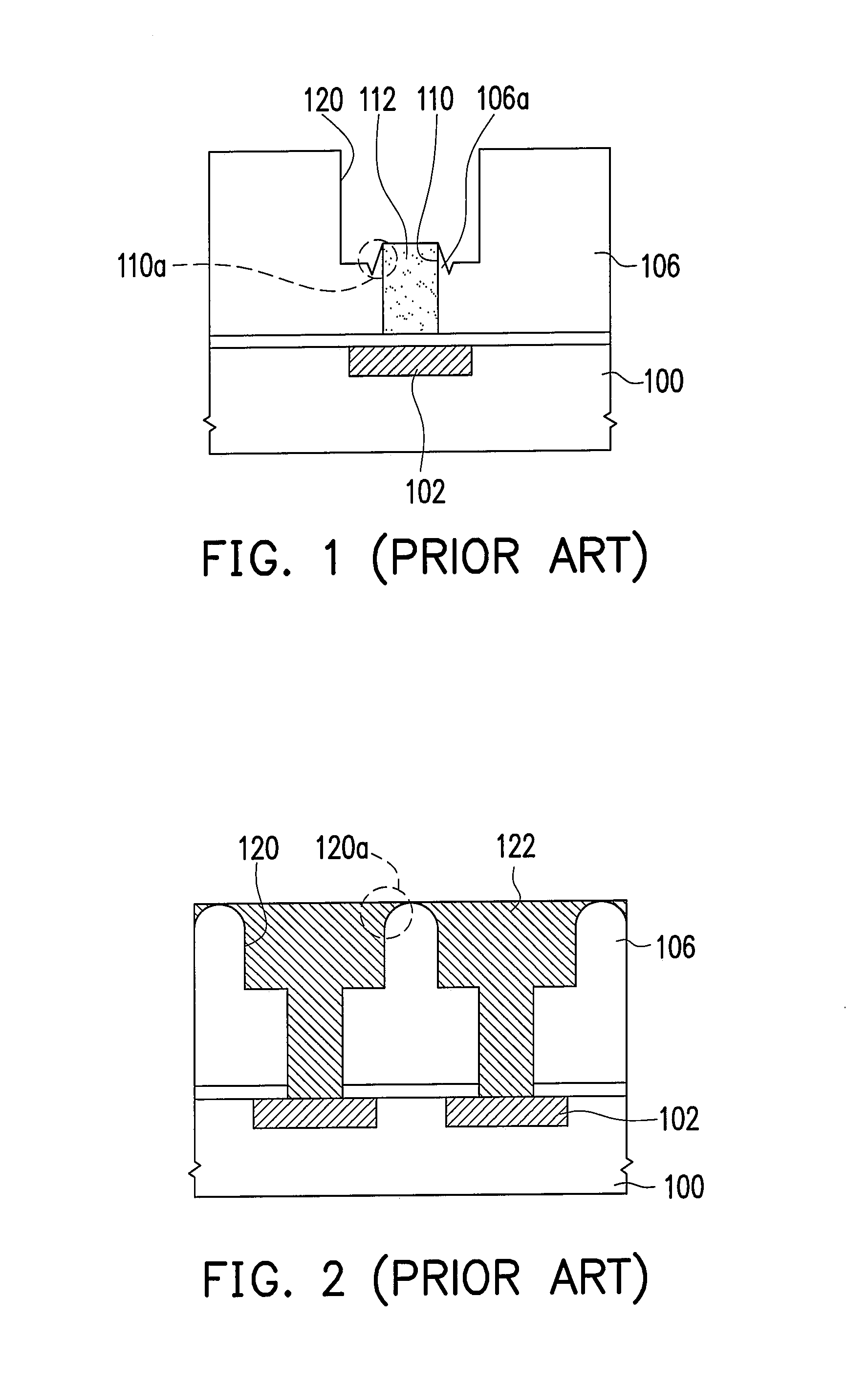Method of forming composite opening and method of dual damascene process using the same
a damascene and composite opening technology, applied in the field of semiconductor/solid-state device manufacturing, basic electric elements, electrical apparatus, etc., can solve the problems of difficult copper patterning, electrical problems of elements, and the reliability of elements
- Summary
- Abstract
- Description
- Claims
- Application Information
AI Technical Summary
Benefits of technology
Problems solved by technology
Method used
Image
Examples
first embodiment
The First Embodiment
[0040]Referring to FIG. 3A, the dual damascene structure of this embodiment is formed on a substrate 300. A conductive layer 302 is already formed on the substrate 300, and a liner 304 is already covered on the conductive layer 302. The substrate 300 is, for example, a semiconductor substrate, such as a silicon substrate or a silicon-on-insulator (SOI) substrate. The conductive layer 302 is, for example, a metal interconnect, such as a copper wire. The liner 304 covered on the conductive layer 302 can be used to prevent the conductive layer 302 from being oxidized, the material thereof is, for example, a layer of SiN, and the forming method is, for example, chemical vapor deposition (CVD). A dielectric layer 306 is formed on the liner 304, and the material thereof is, for example, a low dielectric constant material. The low dielectric constant material is a material layer with a dielectric constant lower than 4, for example fluorinated silicon glass (FSG); silses...
second embodiment
The Second Embodiment
[0046]FIGS. 4A to 4D are schematic cross-sectional views of the processes of forming a composite opening according to an embodiment of the present invention.
[0047]Referring to FIG. 4A, a material layer 406 is formed on the substrate 400, the material thereof is not limited, and can be, for example, a dielectric layer such as a silicon oxide layer or any material that is predetermined to form the composite opening, and the forming method is, for example, CVD. Then, the photolithographic process and the etching process are performed to form a narrow opening 410 in the material layer 406. The etching gas used in the etching process is relative to the material of the dielectric layer. When the material layer 406 is silicon oxide, the etching gas is, for example, CF4 / Ar / N2 or CHF3 / Ar / N2. Then, a gap fill material 412 is filled in the narrow opening 410. The uniformity of the deposition of the gap fill material 412 is good, and the difference of the gap fill material ...
PUM
| Property | Measurement | Unit |
|---|---|---|
| dielectric constant | aaaaa | aaaaa |
| dielectric constant | aaaaa | aaaaa |
| conductive | aaaaa | aaaaa |
Abstract
Description
Claims
Application Information
 Login to View More
Login to View More - R&D
- Intellectual Property
- Life Sciences
- Materials
- Tech Scout
- Unparalleled Data Quality
- Higher Quality Content
- 60% Fewer Hallucinations
Browse by: Latest US Patents, China's latest patents, Technical Efficacy Thesaurus, Application Domain, Technology Topic, Popular Technical Reports.
© 2025 PatSnap. All rights reserved.Legal|Privacy policy|Modern Slavery Act Transparency Statement|Sitemap|About US| Contact US: help@patsnap.com



